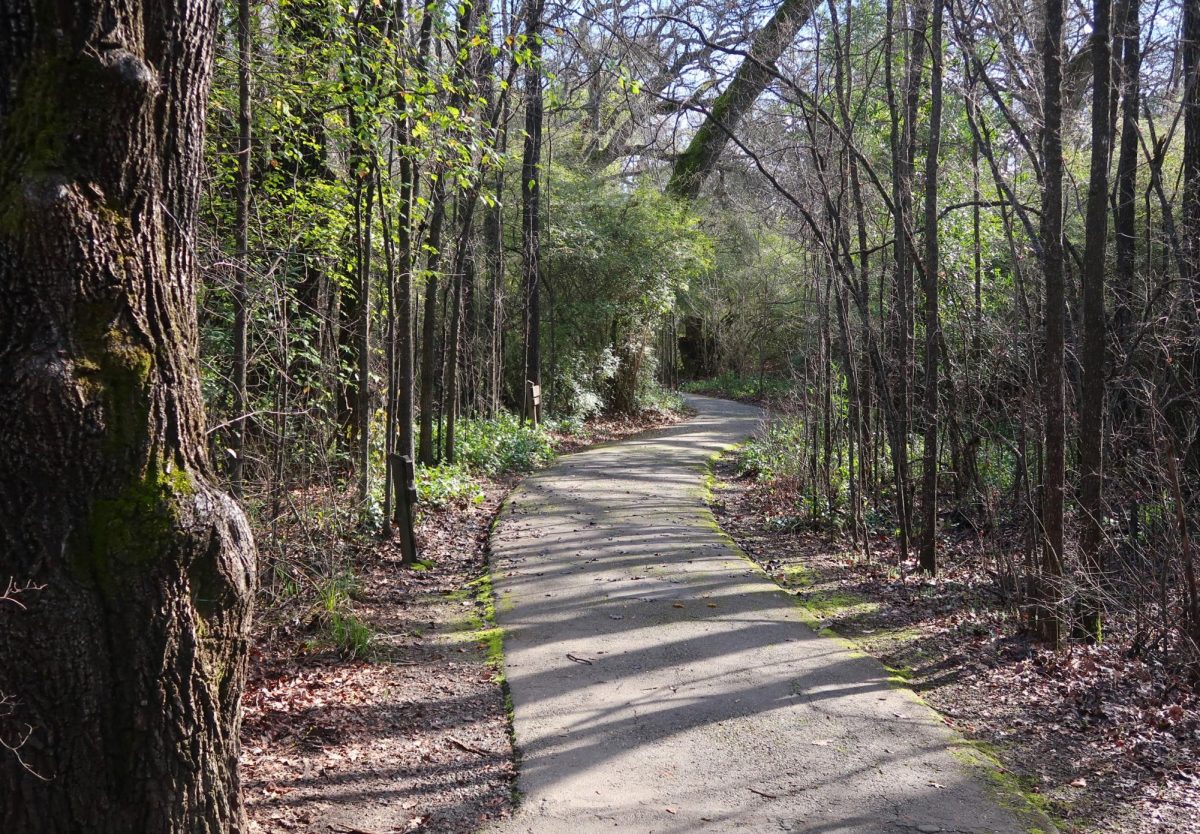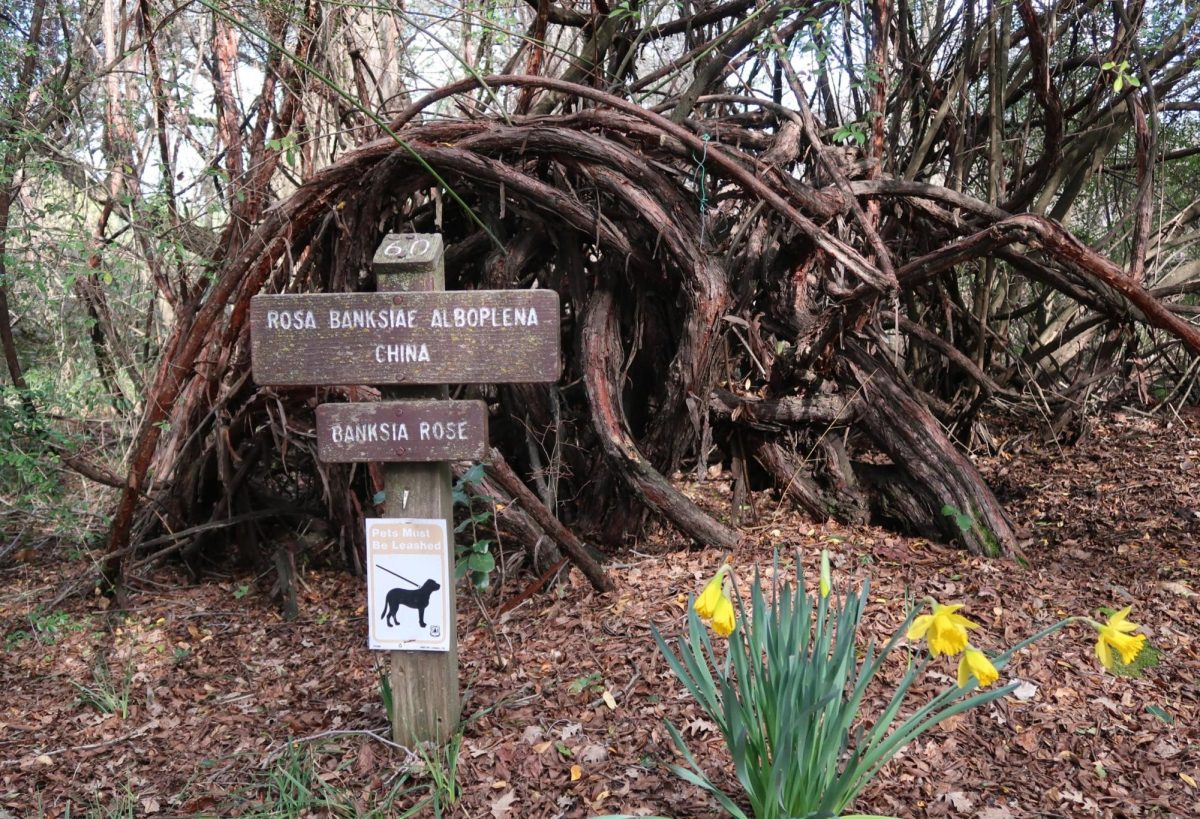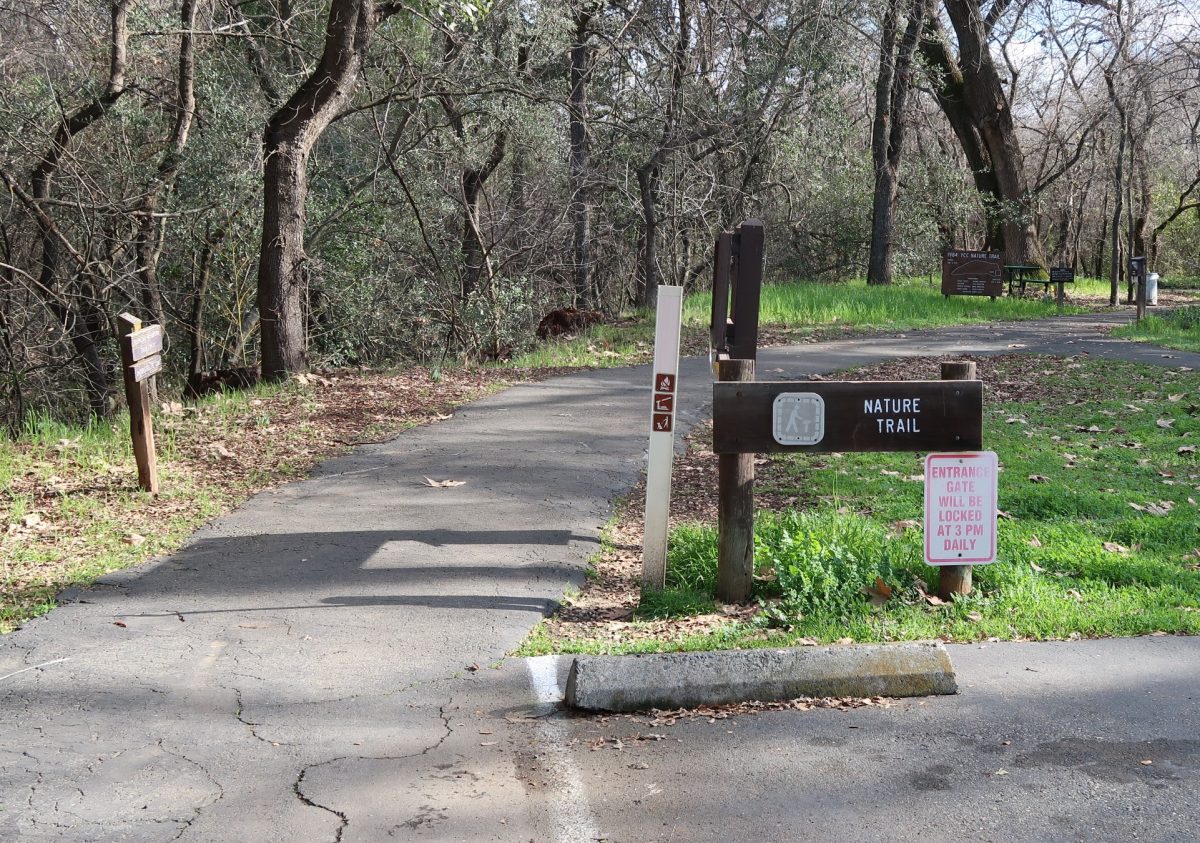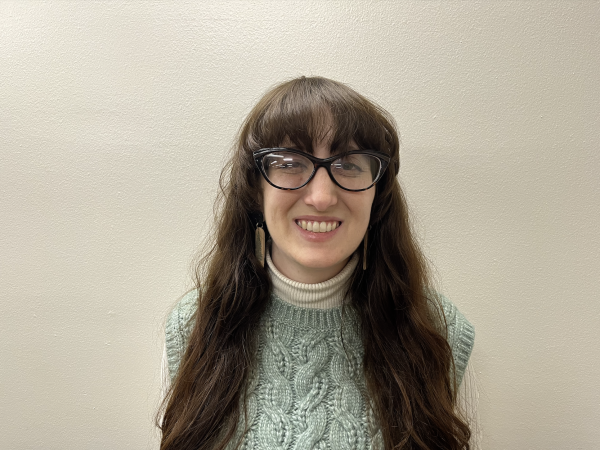This spring, I will share some trails to impart new knowledge or perspectives. I hope you’ll visit them, learn something new, enjoy time in nature and leave with a desire to contribute to the future of your local parks and trails. You can find the series introduction here.
Stepping onto the nature trail at the Chico Seed Orchard feels like walking into a physical embodiment of one of my favorite childhood stories, “The Secret Garden.”
The path winds through trees and other flora that show clear human design and cultivation, but it also feels wild because natural cycles have crept in, leaving behind fallen trees and overgrowth.
What makes this trail a standout?
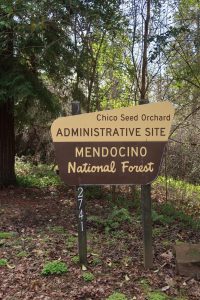
While it is not far-removed from a main city thoroughfare, the nature trail at Chico Seed Orchard feels like another world.
The trail follows a meandering path under arching, mature tree branches. The trees, previously planted as part of the Seed Orchard’s original purpose, are grouped mostly by type. Walkers can observe different types of oak on a certain part of the trail, then pine, eucalyptus or cedar.
Seeing the species arranged this way makes both their similarities and differences stand out. A tree is not just a tree; the bark on some is smooth, some rough and some have it falling off like puzzle pieces to reveal hidden colors underneath.
The trail has many such observations for the hiker who takes time to look. Old wooden signs offer the names of trees and plants. Many trees hold boxes and houses for bats and birds.
Above, in the thick canopy formed by the tree branches, there are singing, chattering birds. The birds are as varied and colorful as the trees that form their habitat. I lack any birding expertise, but still noticed multiple types with various colors and patterns.
Listening further, springtime walkers may be able to hear a symphony of rumbling bees. I stood under one of the only blooming trees at the time of my visit and listened to them buzzing for several minutes. They were content and docile, unbothered by my presence as they focused on their task.
Adding to the storybook feel, some vines arch and loop to form round tunnels off the trail. I know if I had walked the trail as a child, I would have imagined them to be fairy homes. To be honest, I still thought of them this way.
It’s hard not to feel a sense of childlike wonder when walking around, looking up at trees as large as some at the Seed Orchard. There are treasures to be seen littering the trail as well. Looking down, I saw delicate white petals that fell like snowflakes, the puzzle bark from the Chinese Pine and some giant leaves that were bigger than my face.
Of course, no fairytale is without some degree of danger. The Chico Seed Orchard has signs warning about the possibility of mountain lion activity, falling tree limbs and rattlesnakes. However, most potential risks can be mitigated by simply staying on the path and being aware.
Walking through agricultural history and current cultivation
Visitors to the Chico Seed Orchard may not realize, as they observe its natural beauty, that the area is also deeply rooted in agricultural history, both local and national.
The orchard, founded in 1904, was originally called the Plant Introduction Station. A newspaper from that year, The Weekly Calistogian, stated that several agricultural districts across California applied to be considered for the station, but Chico was selected as the first choice.
“Chico was selected because of its uniformly good soil surface, its abundance of water and its typically representative California climate,” the article stated.
Over the decades to come, the station would research agricultural products and cultivate plants from other countries. Describing the intended purpose of the garden, the Calistogian article concluded, “The plant introduction garden will be the only one of its kind in the United States. It will be used to grow plants of all kinds for distribution all over the United States.”
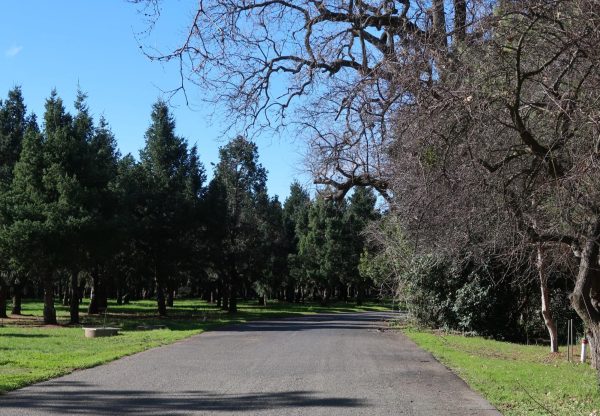
Much of the scientific work included plants used in food, and the workers at the station determined points like what cereal wheat would be best to grow in California. Plants brought to Chico for introduction and cultivation included current grocery staples like artichokes and kiwis.
A story from the Paradise Post in 1968 called the kiwi a “rare, exotic berry.” Paradise, and Butte County in general, would become a major national producer of kiwi.
The original kiwis planted in the 1930s are still at the Chico Seed Orchard today. They are known as the “mother” and “father” kiwi. It is strange to think that these plants were used to learn about a crop that was considered new and unusual but is common now.
The Chico Seed Orchard is still used for agricultural research today. In fact, the primary function of the location, as defined by the U.S. Forest Service, is “to develop and provide high quality, source identified seed adapted to current and future planting environments to enhance reforestation and promote gene conservation in Region 5 while focusing on the production of ponderosa pine and Douglas-fir seed.”
The seeds the orchard produces are used to benefit restoration efforts, wildfire recovery, habitats for endangered species and research for forest health, among other features.
What to expect from the trail
The nature trail is fairly accessible, as far as trails go. It is fully paved, though some sections remain more smooth than others. It’s only a mile long, and walkers could easily adapt to shorten the length of their hike.
It is nicely structured, and hikers shouldn’t struggle with getting lost as long as they stay on the loop. However, the provided map at the entrance of the trail is a little confusing and not very helpful. It’s easier to just watch other walkers or backtrack than it is to pull out the paper map and try to figure out where you are.
It would be hard to get truly lost, but you may get turned around following side paths. Good news though: If the worst were to occur and you couldn’t find your way back, there is strong cell service. You should easily be able to text, call or check an app or online map.
On the sunny Saturday morning I visited, there were plenty of other visitors. The trail is dog friendly, and approximately eight out of 10 people had a leashed dog with them. Others pushed strollers or walked hand-in-hand with their young children on the wide, paved pathways.
Even with all the other people on the path, it didn’t feel crowded. Everyone was very considerate of their fellow guests and stayed out of the way of others.
There are decent amenities along the trail, more than you would find on a more rural trail. Trash cans are secured at intervals along the nature trail, and judging by the lack of litter, they are actually used by guests. There is a public bathroom, and while it is clean, it is the old-fashioned, “hole-in-the-ground” variety you’ve probably used if you’ve visited many National Parks.
Picnic tables and seating are a welcoming trailside addition, and I could easily see myself returning to sit and enjoy a lunch in between classes, or reading a book on one of the benches among the trees.
Overall, the accessibility, ease of use and amenities are better than many other trails I’ve visited. Don’t expect perfection — it is a nature trail after all — but you can plan to have a worry-free, comfortable walk.
The downside, depending on your preferences and introverted tendencies, is that you will likely see other people and maybe even have to greet some of them. Just smile, say “hello” and keep going; if my experience is any indication, your fellow trailgoers will likely do the same.
Other notes to keep in mind
The Chico Seed Orchard and the nature trail are managed by the U.S. Forest Service under the Mendocino National Forest. Rangers or other employees may be available during regular hours, but I did not see any on the weekend.
Your navigation app may or may not take you directly to the seed orchard. Mine tried to overshoot and send me closer to the offices of the Butte County Search and Rescue.
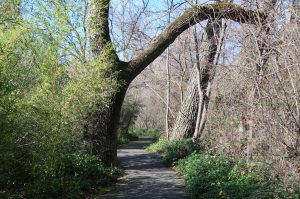
It’s not hard to find though, at least not with some simple directions. If you head down Skyway toward Paradise, you’ll want to turn off on Dominic Drive. It’s just before Klean Kanteen.
From there, you’ll turn left on Morrow Lane. Look for the Forest Service sign and turn right down Cramer Lane. Follow Cramer down to the end, where you’ll see more signage and some gravel parking spaces right off the road.
The Chico Seed Orchard has a gate that is open on weekdays. On weekends, like when I went, it is closed, but you can park outside and still access the pedestrian gate during daytime hours.
The functioning, current Seed Orchard has barricades and signs asking the public to stay out, as the growing plants should not be disturbed. You can still enjoy seeing the trees from a distance, and there is plenty to see on the nature trail where guests are welcome.
Check back soon for another trail review to help you explore new places and concepts.
Heather Taylor can be reached at orionmanagingeditor@gmail.com.






